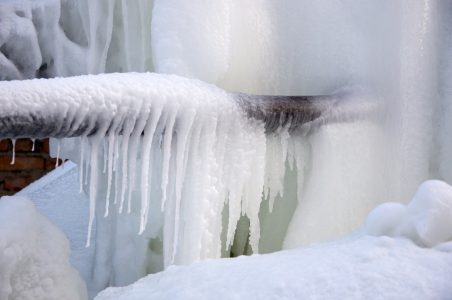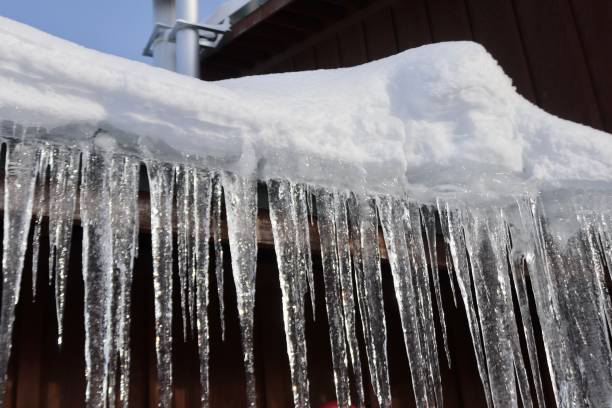This post below pertaining to Prevent Frozen Pipes is quite motivating. Check it out for your own benefit and figure out what you think about it.

Cold weather can ruin your plumbing, specifically by freezing pipes. Here's how to stop it from taking place and what to do if it does.
Intro
As temperature levels decline, the risk of frozen pipelines rises, possibly resulting in expensive repair services and water damage. Understanding just how to avoid frozen pipes is critical for property owners in chilly climates.
Recognizing Frozen Pipes
What creates pipelines to freeze?
Pipes freeze when revealed to temperatures listed below 32 ° F (0 ° C) for extended durations. As water inside the pipes ices up, it broadens, taxing the pipe walls and possibly causing them to break.
Risks and problems
Frozen pipelines can cause water disruptions, building damage, and pricey fixings. Burst pipelines can flood homes and create extensive architectural damages.
Indicators of Frozen Pipes
Identifying frozen pipes early can stop them from breaking.
How to determine frozen pipes
Try to find decreased water circulation from faucets, uncommon smells or sounds from pipes, and noticeable frost on revealed pipelines.
Avoidance Tips
Protecting vulnerable pipes
Cover pipelines in insulation sleeves or use warm tape to secure them from freezing temperature levels. Focus on pipelines in unheated or exterior areas of the home.
Home heating strategies
Keep indoor areas properly warmed, particularly locations with pipes. Open cupboard doors to allow warm air to circulate around pipes under sinks.
Protecting Outdoor Pipes
Yard pipes and outdoor taps
Separate and drain garden hoses before winter months. Set up frost-proof spigots or cover exterior taps with protected caps.
What to Do If Your Pipelines Freeze
Immediate activities to take
If you believe icy pipelines, maintain faucets open to relieve stress as the ice thaws. Utilize a hairdryer or towels soaked in hot water to thaw pipelines gradually.
Long-Term Solutions
Architectural adjustments
Consider rerouting pipes away from outside wall surfaces or unheated locations. Include added insulation to attic rooms, cellars, and crawl spaces.
Upgrading insulation
Purchase top quality insulation for pipes, attic rooms, and wall surfaces. Appropriate insulation helps maintain regular temperatures and minimizes the threat of icy pipes.
Verdict
Preventing icy pipes calls for proactive steps and fast actions. By recognizing the causes, signs, and safety nets, house owners can shield their pipes during winter.
6 Proven Ways to Prevent Frozen Pipes and Protect Your Home
Disconnect and Drain Garden Hoses
Before winter arrives, start by disconnecting your garden hoses and draining any remaining water. Close the shut-off valves that supply outdoor hose bibs and leave the outdoor faucet open to allow any residual water to drain. For extra protection, consider using faucet covers throughout the colder months. It’s also important to drain water from any sprinkler supply lines following the manufacturer’s directions.
Insulate Exposed Pipes
Insulating your pipes is an effective way to prevent freezing. Pipe insulation is readily available at home improvement stores and is relatively inexpensive. Pay close attention to pipes in unheated areas such as the attic, basement, crawl spaces, or garage. Apply foam insulation generously to create a buffer against the cold. You can also wrap your pipes in heat tape or thermostat-controlled heat cables for added warmth.
Seal Air Leaks
Inspect your home for any cracks or openings that could let in cold air. Seal any holes around the piping in interior or exterior walls, as well as the sill plates where your home rests on its foundation. Additionally, make sure to keep your garage door closed unless you’re entering or exiting. Leaving it open creates a significant air leak that can lead to frozen pipes.
Allow Warm Air Circulation
During cold snaps, it’s essential to allow warm air to circulate evenly throughout your home. Leave interior doors ajar to promote better airflow. Open kitchen and bathroom cabinets to help distribute heat consistently around the rooms. If you have small children or pets, be sure to remove any household chemicals or potentially harmful cleaners from open cabinets for safety.
Let Faucets Drip
A small trickle of water can make a big difference in preventing ice formation inside your pipes. When temperatures drop significantly, start a drip of water from all faucets served by exposed pipes. This continuous flow helps prevent the water from freezing. Additionally, running a few faucets slightly can relieve pressure inside the pipes, reducing the chances of a rupture if the water inside does freeze.
https://choateshvac.com/6-proven-ways-to-prevent-frozen-pipes-and-protect-your-home/

I came across that blog post about How to prepare your home plumbing for winter weather while doing research the search engines. In case you enjoyed our blog post kindly remember to pass it around. Thanks for your time spent reading it.
Book An Estimate Now